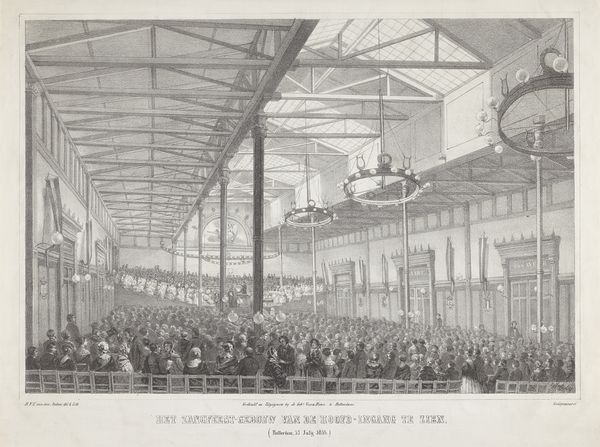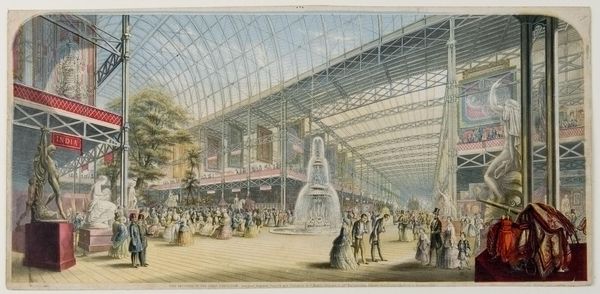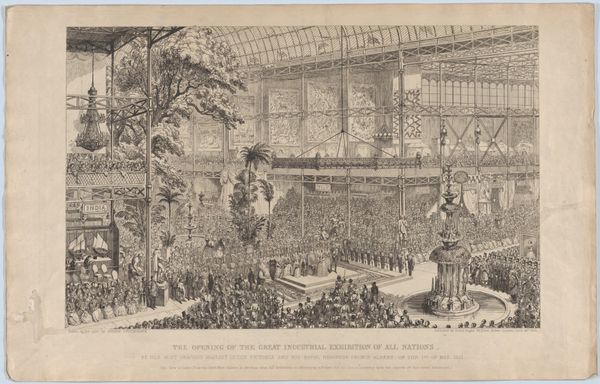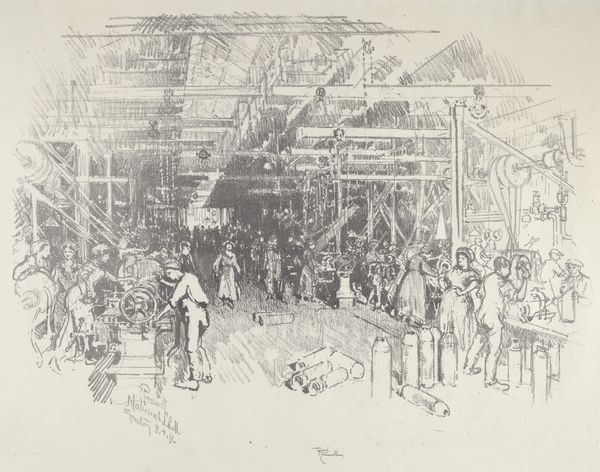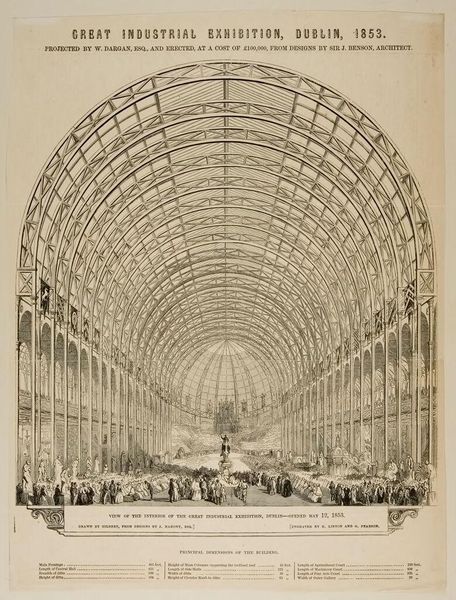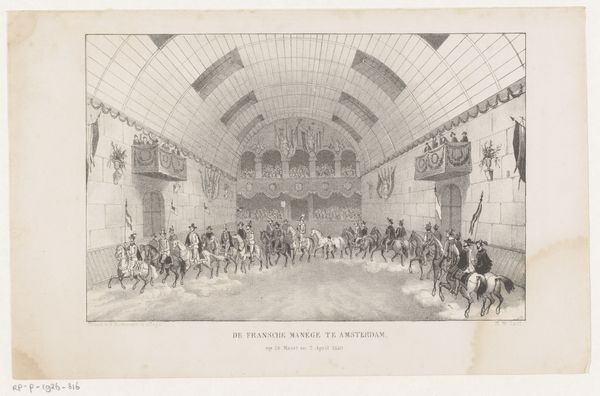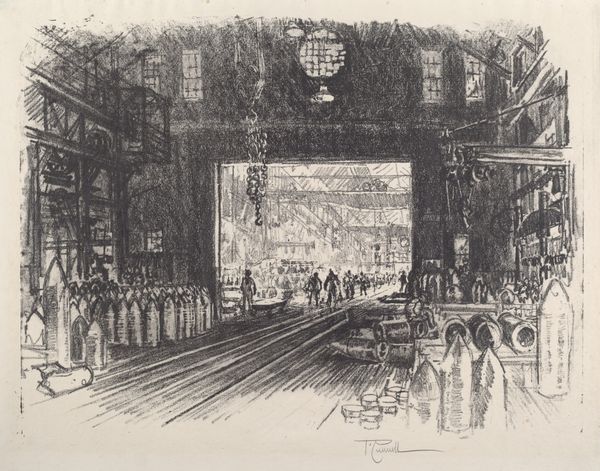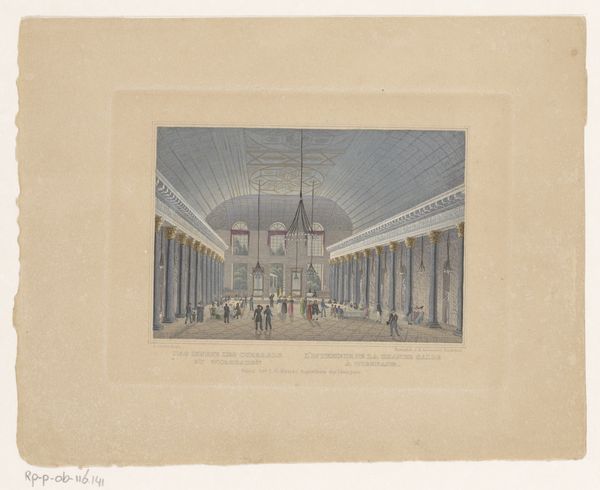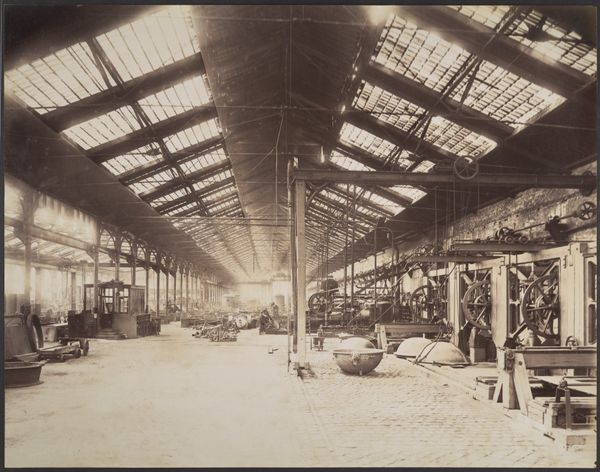
An Interior View of the New York Crystal Palace 1853
0:00
0:00
drawing, lithograph, print
#
drawing
#
lithograph
#
parchment
# print
#
cityscape
#
academic-art
Dimensions: image: 13 1/2 x 20 3/8 in. (34.3 x 51.8 cm) sheet: 16 3/8 x 23 in. (41.6 x 58.4 cm)
Copyright: Public Domain
Curator: Let’s turn our attention to “An Interior View of the New York Crystal Palace,” a lithograph and drawing created around 1853 by Charles Parsons. The original building itself was erected for the Exhibition of the Industry of All Nations. Editor: My first impression is one of remarkable order. The architectural precision, the carefully placed figures – it feels less like a bustling fair and more like a carefully staged display. There's an almost uncanny sense of calm for such a grand space filled with so many people. Curator: Absolutely, and that calm speaks to a larger narrative of the mid-19th century. These World's Fairs, like the one hosted in the Crystal Palace, were sites of immense cultural projection. They presented a vision of industrial progress and global interconnectedness but also subtly reinforced hierarchies. Consider how the exhibits from various nations were curated; they reflected prevalent imperialist ideologies of the time. Editor: I am captivated by the repeating geometries in the architecture itself, that elegant dance of verticals, arches, and horizontals. The light, rendered so subtly with delicate lines, floods the interior. How would you say Parsons employs the interplay of light and shadow here? Curator: Skillfully. Beyond aesthetic qualities, consider the social symbolism within the image. The exhibition of progress was inherently gendered. While the domestic sphere, often associated with women, was challenged by new technologies, it was often reasserted through displays like model kitchens. It's crucial to investigate which communities and perspectives are left out. For instance, whose labor fueled these technological advances and who got to experience this moment of innovation? Editor: I see your point. Though there are various national flags draped from the viewing galleries, the muted palette homogenizes them. The human forms almost become just textural details, emphasizing the building’s geometry over distinct individual identities. Curator: Exactly. Parsons gives us a window into a pivotal moment, yet understanding what remains unseen behind it is as essential. Editor: This view indeed shows an extraordinary period! Considering this intricate formal structure alongside its inherent contextual complexity really has been… enriching. Curator: I agree; appreciating this depiction of the Crystal Palace requires a comprehensive reading.
Comments
No comments
Be the first to comment and join the conversation on the ultimate creative platform.
